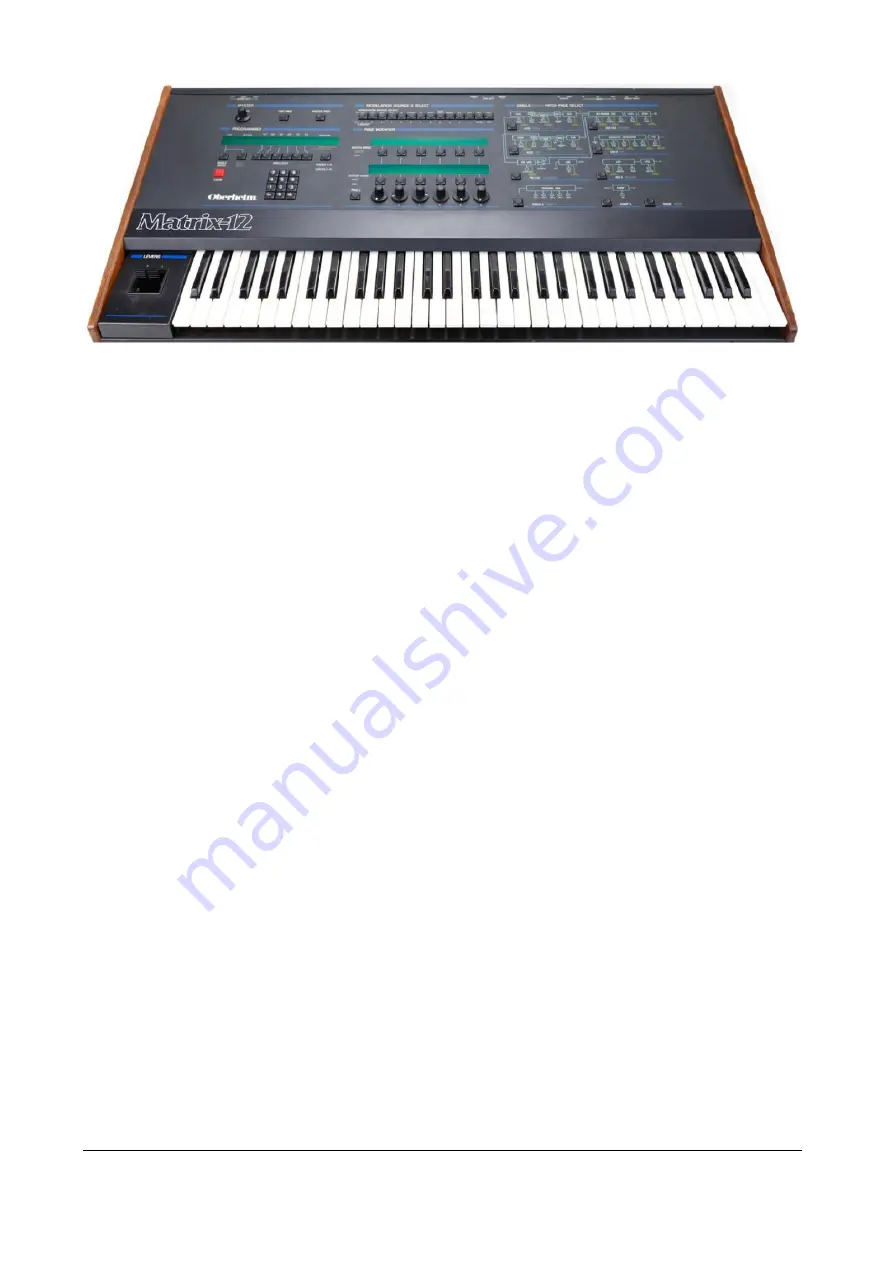
ARTURIA – Matrix-12 V – USER MANUAL
14
The Oberheim Matrix 12
To maintain basic patch compatibility with the Xpander, each of the Matrix 12’s
dual-oscillator voices boasted the same 15-mode voltage controlled filter (VCF),
five envelopes and five low-frequency oscillators (LFOs) as well as a Lag processor
(for portamento, etc.), three tracking generators and four ramp generators (i.e.,
modulation delays), which added up to a lot of programming options. On top of
that, the Matrix Modulation section allowed almost any imaginable sort of control
over the final sound, from small refinements to radical routings that could
completely disfigure the sound if desired: mods could be modulating the sources
of other mods, etc.
And as usual with Arturia, our Matrix-12 V offers you all of the original features and
many, many more.
1.2.4
Where the sound is found…
The list of albums made using the various Oberheim synthesizers could fill an
encyclopedia. They have certainly filled the airwaves over the years:
Styx – The Grand Illusion
Rush – Moving Pictures
The Police – Synchronicity
Prince – 1999
Queen – The Game
Jean Michel Jarre – Magnetic Fields
Bruce Hornsby & The Range – The Way It Is
Madonna – Madonna
Tangerine Dream – Exit
Van Halen – 1984
This is only a small percentage of the songs, styles and artists fueled and driven by
Oberheim products. They have clearly proven themselves as great creative tools,
to say the least.
1.3
All good things come to an end…for a while
It’s a sad truth that no matter how excellent a company’s products are, they
sometimes find it hard to stay afloat. Alas, this was true of Oberheim Electronics as
well, which changed hands a number of times beginning in 1985. Tom stayed on















































